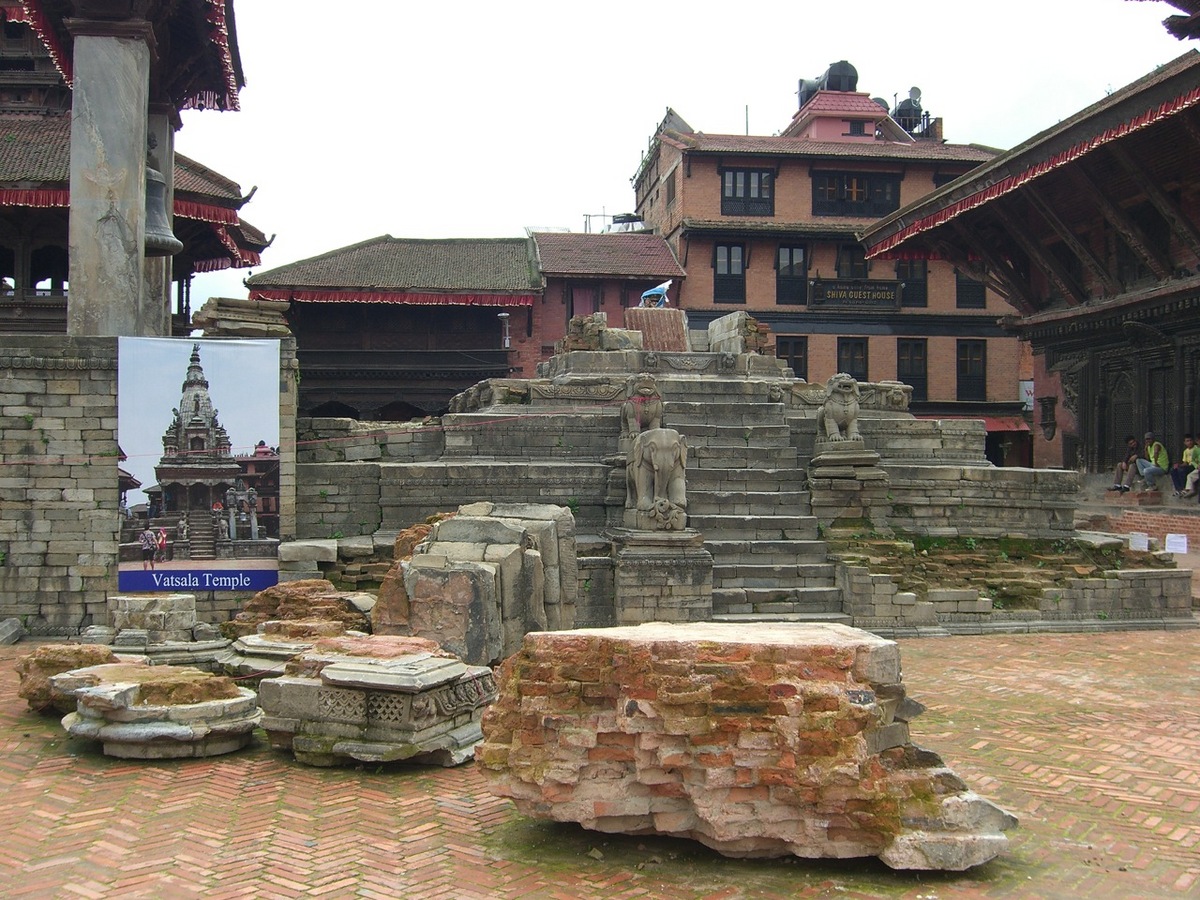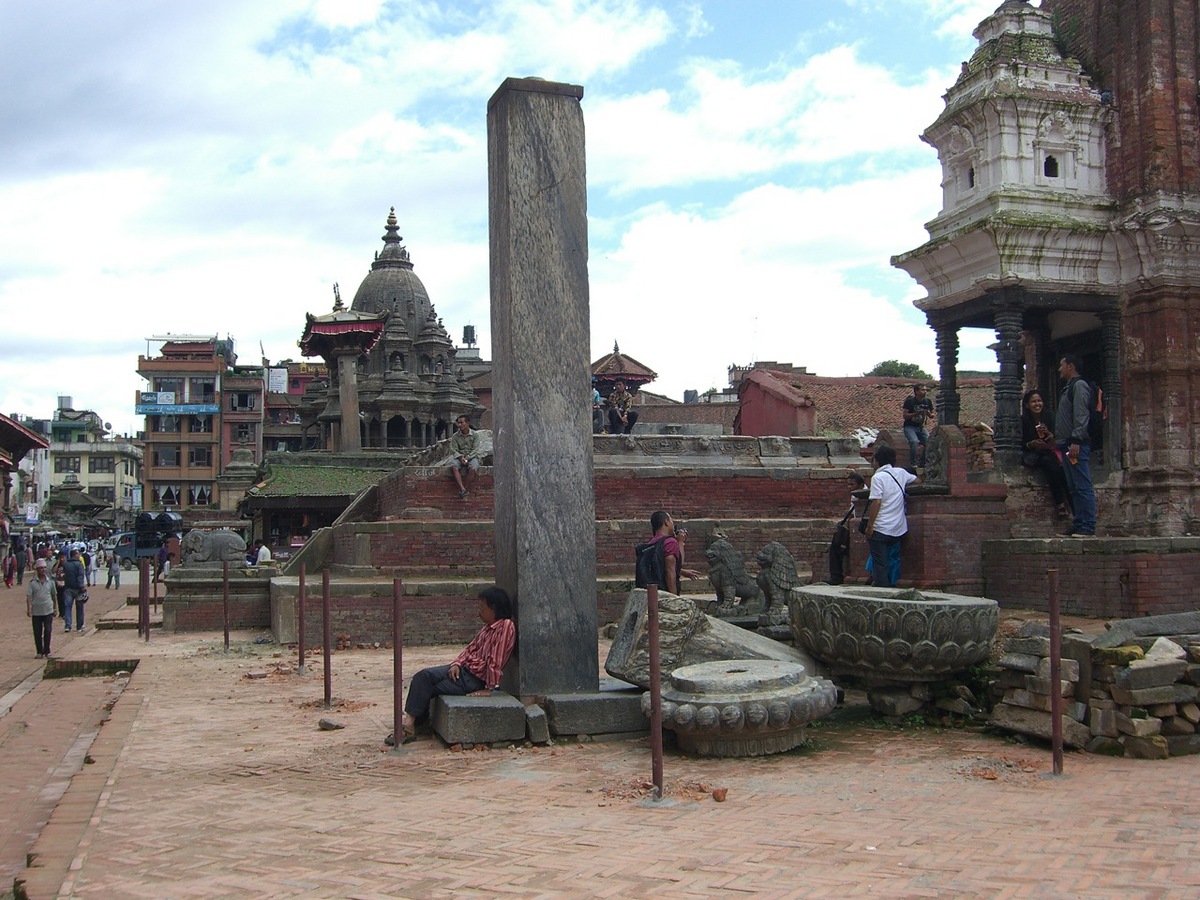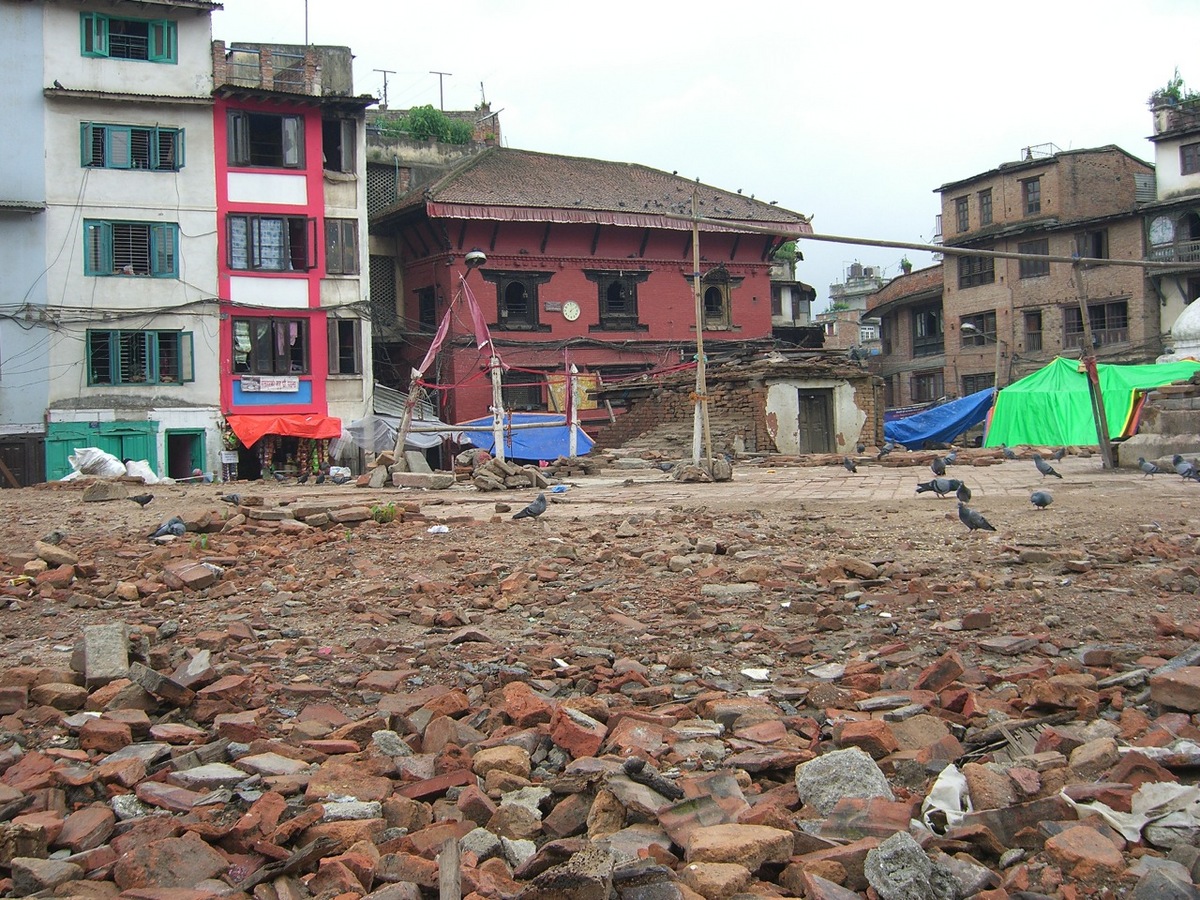Professor looks to future of damaged artifacts in Nepal

In Bhaktapur, a banner next to the ruins of the Vatsala Temple shows the structure as it once was.
Photos courtesy of Gudrun Bühnemann
Gudrun Bühnemann, a scholar of Buddhism and Hinduism at the University of Wisconsin–Madison, visits the beautifully detailed temples of the Kathmandu Valley in Nepal nearly every year.
This spring, just before her latest trip, two major earthquakes struck, killing or displacing hundreds of thousands of people. Countless historic structures — including many still used as places of worship — were damaged or destroyed.
Now Bühnemann, professor in the departments of East Asian Languages and Literature and Languages and Cultures of Asia, hopes her work can help preserve and rebuild some of Nepal’s treasures.
Nestled in the Himalayas between India and China, Nepal represents the meeting of several cultures and religions. The Kathmandu Valley, the country’s cultural center, boasts seven UNESCO World Heritage Sites, including three Darbar Squares (“noble courts” including royal palaces) in the cities of Kathmandu, Bhaktapur and Patan.

In Patan, daily life goes on around the collapsed pillar of King Yoganarendra Malla.
The squares, built between the 12th and 18th centuries, are social, religious and urban focal points as well as major tourist attractions. Nepal is one of Asia’s poorest countries, and tourism — based in large part on its Hindu and Buddhist history — represents one of its major industries, says Bühnemann.
Bühnemann first traveled to Nepal in 1979. She typically visits for three to five weeks each summer, working in libraries and archives to study Sanskrit texts and manuscripts. She also documents representations of deities in temples, sunken stepped fountains and museums, sharing her work with scholars in Nepal.
She postponed this year’s trip to July. By then, food, water and electricity (as well as Internet connections) were in reasonably good supply, and the damage seemed less than originally feared. Many ancient temples survived the earthquake undamaged.
Still, more than 30 Kathmandu Valley monuments had collapsed, while another 120 were partially damaged. Estimates for repair across the country are approximately $160 million.
“The photographs of monuments taken before the earthquake have become important documents that will help architects to reconstruct lost buildings.”
Gudrun Bühnemann
Heritage sites reopened in mid-June, with a ceremony in Bhaktapur featuring Nepal’s tourism minister. However, many structures remain in danger of collapse. Bulldozers attempting to clear rubble risk damaging ancient and fragile remnants.
Bühnemann conducted some new research, studying aspects of the iconography of Tantric deities. She also surveyed damage to cultural sites she considers especially relevant to her work.
For centuries, the kings of Nepal lived in the Hanuman Dhoka Palace Complex in Kathmandu’s Darbar Square. The complex has suffered considerable damage, which has caused problems at its museum.
“The walls and roof have disintegrated,” said Christian Manhart, the head of UNESCO’s mission in Nepal, in a National Geographic article. “There are 6,000 objects and no storage space.”
The 16th-century Kasthamandap pavilion, which lent its name to the city of Kathmandu, was one of the largest and most well-known pagodas of Nepal, and a top tourist attraction. The entire multistory structure contained no iron nails or supports and was made entirely from wood, supposedly obtained from a single tree. Severe damage from the April earthquake caused it to collapse.

In Kathmandu, only a few bricks remain at the site of the multi-story Kasthamandap pavilion, one of Nepal’s top tourist attractions.
The 200-foot Dharahara (or Bhimsen) Tower, the tallest building in Nepal, killed nearly 180 people when it collapsed; Bühnemann says it has been “reduced to a stump.”
Meanwhile, the threat of another earthquake remains. Bühnemann experienced a brief aftershock in July, registering 4.0 on the Richter scale.
Today, a travel warning remains in place for Nepal. Sections of some buildings have been declared unsafe and closed — temporarily or permanently.
“This is one of the reasons why tourism is very slow,” says Bühnemann. “There are considerable economic drawbacks because there are hardly any tourists. Many hotels and restaurants have shut down, and tourist and trekking guides are out of business.”
Still, Bühnemann plans to return next year, optimistic about the potential for recovery. She estimates that rebuilding some of the temples may take five or 10 years, relying heavily on foreign donations.
She is eager to contribute her scholarship to the rebuilding effort.
“Scholars like myself have studied and documented ancient monuments in the Kathmandu Valley,” says Bühnemann. “The photographs of monuments taken before the earthquake have become important documents that will help architects to reconstruct lost buildings.”




